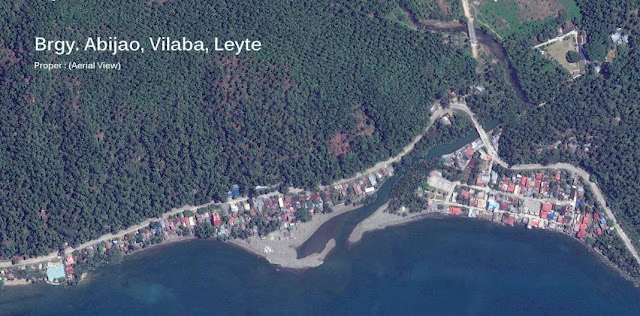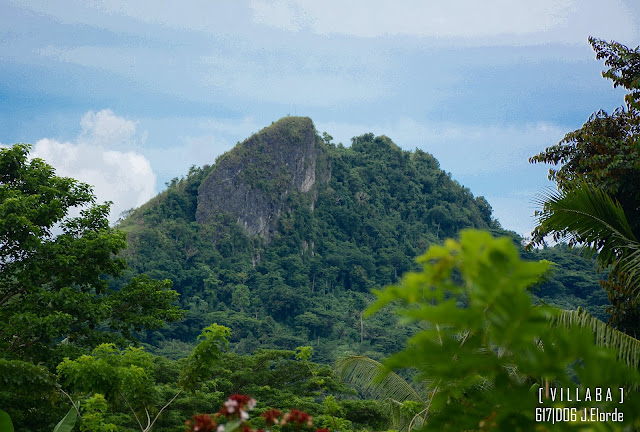Barangay Abijao - History and Folkways
I remember, way back in one of my college days, our English teacher assigned us to make a research paper on how our respective barangay acquired its name. Of course, I was boggled by the challenge she had given because I haven't heard nor taught by my parents, grandparents, or even in early school about the history of my beloved home, the barangay Abijao.
I asked some old folks about it and one said it came from the tree called Awihaw, yet some said it came from the particular bird which is Antolihaw. But I'm still skeptical because key details such as names and dates are missing. Then, I came across our barangay hall and found a short write-up entitled "Brgy. Abijao Legend" It is written there that the name Abijao is derived from the combined word of Antolihaw, Awihaw, and Abijay. Though occurrences and history were not stated and even if it was just only a myth or a folktale, their posting is quite interesting and I am eager to know more about it. For me to understand how specific events change the lives of our ancestors, I have been looking for old records and photos that hopefully will provide information about the place, people, and events but unluckily I did not found one.
Until mid of 2009 when Marlon Villaflor forwarded a photo of an old document entailing some facts and history of the barangay. The original copy was done by Lola Nacing which is submitted by her to the Bureau of Public Schools (now DepEd) dated July 1953. I found it reliable and true but because it is already old, the paper has turned brown and most of the texts were already ink faded but still, I have managed to transcribe its content.
 |
| File cover |
 |
| Page 1 |
 |
| Page 2 |
 |
| Page 3 |
Here's the full and original context. It read:
Bureau of Public Schools
DIVISION OF LEYTE-SAN ISIDRO DISTRICT
VILLABA ELEMENTARY SCHOOL
July 29, 1953
REPORT OF HISTORICAL AND CULTURAL LIFE OF THE BARRIO
Part I
The barrio now officially known as “Abijao” was formerly called “Pagbalikan” a word which means “Returned” a word which the former old folks had called because people who occupied this place went to far off places and still would return.
Now as years went on, Spanish soldiers who had visited the place inquired for its name and no wonder the Filipinos at the times know nothing about Spanish and instead of answering correctly gave the name of the first inhabitants of the barrio who was Doroteo Abijay. The Spanish came to believed that Abijao was the name of the barrio, not knowing that Abijay was only the family name of a group who were the origins of the place.
This barrio has also small sitios under her, like;
(1) Hubasan, a little place bounded by water and sometimes is dried up.
(2) Halas, a place bigger than Hubasan who was found to have many snakes.
(3) Pandan, a place little bit nearer the barrio and full of pandan plants, too.
The barrio (as far as one old folk remembers) was first opened by those four families of Abijay who were known for their industrious trait and that was in the 18th century. Being the first occupants of the place, Doroteo Abijay encourages to make the place a nice place to live in so that it became a barrio and he was the first Teniente del barrio.
a) Doroteo Abijay being its first teniente in 1854 – 1857.
b) Cesario Abijay in 1857 – 1866.
c) Andres Fernandez, 1884 – 1889.
d) Gavino Abinoja, 1890 – 1893.
e) Faustino Roque, 1894 – 1897.
f) Martin Edades, 1901 – 1905.
g) Basilio Laurente, 1906 – 1911.
h) Aguedo Roylo, 1912 – 1914.
i) Victoriano Laurente, 1914 – 1917.
j) Martin Edades, 1918 – 1920.
k) Anastacio Barro, 1921 – 1922.
l) Baldomero Seco, 1922 – 1924.
m) Antonio Relon, 1925 – 1928.
n) Ramon Adlawan, 1928 – 1930.
o) Carlos Lumapas, 1930 – 1934.
p) Daniel Seco, 1935 -1936.
q) Brigido Tano, 1937 – 1939.
r) Silverio Laurente, 1940 – 1944.
s) Brigido Tano, 1945 -1946.
t) Quirino Umpad, 1947 – 1949.
u) Brigido Tano, 1949 -1953 (Until Date)
During the Spanish Regime, there was not an important happening in this barrio, not until the American Forces came to the Philippines. There were so many organizations that exist, like Pulahan and the Indihinas. Each organization has different rules and regulations, so that one who cannot at once gave the right response to the would-be victims on certain punishment and one of those punishments was to have him beheaded.
War broke out last 1941 and we were aware of the many tortures and abuses made by the Japanese so that Abijao was not also excluded from fear and barrio terror. The time came when the Guerrillas occupied this barrio, which was in August 1944 when the 96th Infantry Regiment moved Northward and Abijao became the Headquarters of the Company E, of the 2nd Battalion and later on the Regimental Headquarters. The people are aware of those convicted spies who were shot to their grave. The time came when the Philippines was almost liberated from the Japanese but Abijao is always remembered because of Bugabuga Valley where many American soldiers died. Later on when the people went home or returned home, they were attacked of malaria, so that those who returned first, none survived, and the second group to return, almost 2/3 (two thirds) again died, so that we who came last were the remnants of the dreadful disease that lies in the history of this barrio.
Many lives had been lost and properties during World War II. All houses were burnt on December 27, 1944, including the barrio school. Many well-to-do had lost their properties in the last few days of 1944 so that now people had to strive hard against crisis and ailment. The people are beginning to reconstruct their homes, trying to rehabilitate those places which were deserted. In one word this barrio is now beginning to be a place worthwhile living, safe from malaria and jolly for all people in it.
Part II-FOLKWAYS
The people in this barrio long before had an aristocratic way of baptizing a child. They had to invite a comparza and had a feast and dances sometimes they put flags and banners in their homes.
When a man courts a lady, he does not usually send letters of courtship but merely goes near the woman and offers to help her. Afterward, the parents of the man will go to the house of the woman and tell the parents of the girl. If the girl accepts, then there was a feast called “Toghok”. The parents of the man in that party shall wait for the respond of the woman and the dowry that she asked. Then another feast follows before a wedding ceremony will be done. But if the woman does not like the man, she has to go to the home of the man and gave her an answer. Still, if the parents of the man gave back to the house of the girl, he brings with him a sum of money and leaves it in the parents of the girl, until the woman accepts, then the courtship stops.
The marriage follows, the man has to stay or helps in the work of the girl, called “Pangagad”. Then the wedding ceremony takes place. The old folks at home prepare a handful or a plate of rice and throw it to the newlyweds. They also had some flowers in a glass and let the couple drink. Until this time there are still people practicing these customs of the marriage ceremony.
According to the old people, their belief about the origin of the world was that God, created the land and sea and the people were the sons and daughters of Adam and Eve. All plants and animals were thrown by God. When there is an earthquake, too, they believed that a big pig is running underground so that people kept on shouting Boa, Boa – if there is an earthquake.
When there is an eclipse, pregnant mothers must not look at it or else their child will be cross-eyed. They believed in witches, that a person who has this power should be entertained and given what she like so she will not exercise her magic power.
The people of Abijao are music minded. They loved the Native Kundiman. Old folks, as well as the young, loves to go at night and serenade. Until this time it is practiced by some men in this barrio.
So far I have not heard that people in this barrio had some proverbs and wise sayings but only these common saying that we also hear from other people of the other places, like these:
(1) “Ang langaw nga makatungtong sa kabaw, mahimo usab nga kabaw” meaning “the fly who alights to a carabao, become a carabao, too).
(2) “Ang tawo nga nag paturok ug sungay, mao na say sungayon”, meaning “The man who puts a horn on someone will be the victim of that horn sometimes.”
According to the people formerly, we people of today cannot tell time without the clock, but during their time, they just look at the position or shadow of the sun, or if not just listen to the sounds of the birds, like the kingfisher or hornbill.
Today those things are also practiced by those people in the mountains or in sitios where there are no watches or clock available.
Respectfully submitted:
(MISS) NARCISA LU BARRO
Committee Chairman
-end-



Comments
Post a Comment